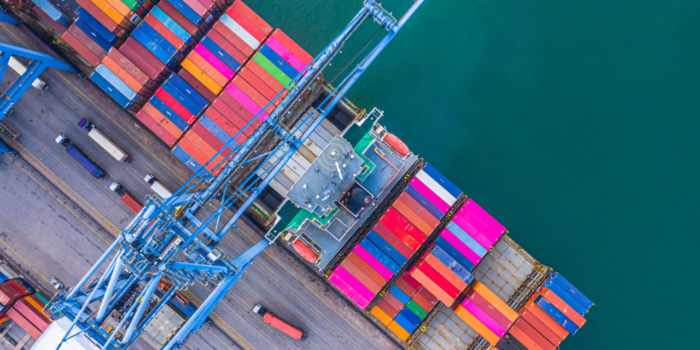The COVID-19 pandemic has brought an unprecedented disruption to global maritime trade, and an even bigger crisis is down the road unless global coordinated action is taken. Amid a growing uncertainty, the great dilemma for governments seems to be protecting public health and maintaining trade transport at the same time, subsequently, safeguarding global economic stability.
Exploring this conflicting issue was at the center of a Winward webinar, which convened maritime experts to discuss how countries could balance safeguarding public health with the need to stay open for business.
However, the current landscape sees a situation where different sorts of quarantine measures are taking place, but not necessarily coordinated worldwide: What one country is doing is not necessarily what another country is doing, while, not all the responses are nationalized, noted Commander James Valentine from USCG.
Meanwhile, there may be many different layers of government responsible for different aspects of port security and health response. What this means is that the industry is going to be navigating in extremely complex array of different types of prophylactic restrictions on their entry into port and what crews can and can’t do,
…he noted.
In this situation, all panelists agreed that the industry and governments should work together to ensure trade continues to flow or the world is going to face an even bigger economic crisis. For example, generic medications are not made in individual countries worldwide.
You have to get ships sailing, you ‘ve got to keep them load on. If we have a bigger disruption of global trade, it is going to be more devastating for global economy. We need pragmatic solutions. If ships are moving, the goods flow. And that means access to ports,
…said Guy Platten, Secretary General at ICS.
Which supply chains are at most risks of disruption?
Without doubt, container shipping industry is mostly at risk because they rely on supply chains not only globally seaborne but also the hinterland connectivity. It all interlink with one another when you put onboard ships and onboard trucks, semi-finished goods to make them finish and bring them to the main consuming regions. So these disrupted supply chains represent the biggest risks right now as there are so many links that need to be working and without those links intact, it simply breaks down. It is much more straightforward if you have commodities like crude oil because that is basically from the quarry of the mine into the power plant, with not much hassle in between.
…explained Peter Sand, Chief Shipping Analyst, BIMCO.
What can be done?
The ongoing crisis creates the need an industry and government collaboration, panelists highlighted. And industry has to take the lead, Valentine noted, for two reasons: Because it has the technology means and because it can achieve a unified approach, in contrast to governments that do not possess a unified standard.
We are all in this together fighting this invisible deadly threat and we do need to join together across countries, across industries, private and public sector. Most importantly we do need to create a conversation.
…said Jason Greenblatt, Former Assistant to the 45th President of the US and special envoy to the Middle East.
While organizations such as the UN and the WHO have a role to play, the industry should focus on its own on keeping discussions vivid and sharing best practices, he added. Industry has its boots on the ground and knows how things are getting done, and it could provide valuable feedback to governments by convening seminars getting the best minds to discuss what works for it.
What global politicians need to do right now is do their outmost of cost to contain this outbreak but certainly also start now prepare for normalizing the economy and getting everyday life and demand back. And they do so by making sure that consumers still have purchasing pal and the same goes for the companies which are supposed to employ them. So we can only be afraid of the first unemployment rates, but we rely on politicians to do their outmost to limit this enormous economic damage,
…added Mr. Sand.
Also of critical importance is keeping the crew members onboard safe, panelists underlined.
We need to keep both sides safe by ensuring crews are not in contact with those onshore, create a protective gear, and ensure each port is equipped with appropriate protective gear to keep everybody safe, there should be proper food given to the crew without having them to go ashore.
…stressed Mr. Greenblatt.
The role of technology
Tech community has many solutions in the form of distance diagnosis to reduce the risks.
We need to let the best of them bubble to the surface and then share this technology widely,
…underlined Mr. Greenblatt.
There are a variety of techs in machine learning that can easily assist to this: Significant correlations and co-variables can be identified that could both help trade get restarted and identify risk factors. I think this is going to be a wise part of any risk management. Being able to articulate that in a nice clean way will also be critical,
…noted Mr. Valentine.
The way to the future
In any case, each country has different needs and responsibilities, but they are all fighting the same thing: How to keep citizens safe and how to limit disruption to the worldwide economy. And figure out how to do it globally. As such, the real economic challenge will be getting governments, shipping industry and international organizations together to ensure flow of international trade. This situation highlights the need for some sort of standardization to find ways to address such crisis internationally, and, most importantly, be prepared for the next crisis.
Did you know?
Winward also created a map to provide a greater understanding of global trade flows. This information seeks to enable researchers, ports, governments, and health officials to strike that delicate balance between protecting public health and maintaining global economic stability:




























































